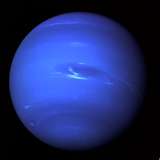Kintara IV
| Kintara IV | ||
 | ||
| Primary: | Akletch | |
| Class: | Class M | |
| Diameter: | 14,323 Km | |
| Mass: | 8.238 * 1024 kg | |
| Gravity: | 15.696 m/sec2 | |
| Distance from Primary: | 1.23 AU | |
| Surface Temp.: | 16.3 celsius avg. | |
| Rotational Period: | 22 hours, 28 minutes | |
| Orbital Period: | 413.2 days | |
Introduction[edit]
Kintara IV is a world deep within Orion Space near the Borderlands and home to the Kintara Syndicate. It has a large biodiversity with a number of vicious, predatory beasts still thriving almost untouched in places on its five major land masses which are hunted by select males (with hand weapons only) as trophies and rites of passage.
Lord Gled Forsch is one such male who hunted down and bagged a Sheff, he still keeps its pelt in his quarters for its warmth in his bedding and as a trophy.
The Sheff are nocturnal hunters some twelve feet in length snout to hindquarters (Not including tail), four legged and stand 5'10" at the withers on average. They have two rows of razor sharp teeth, upper and lower with canines in the first row which protrude several inches below their lips. Sheff have exceptional night vision, sense of smell and hearing and are some of the most feared of Kintara IV's predators.
Kintaran males are unrivaled among the Orions due to their heavier musculature, cunning and ferocity even when not under the influence of their female's phermones.
As the planet orbits a relatively young star it is logical to assume that higher forms of sentient life have not yet developed though time will tell if that is a correct assumption.
Hydrosphere[edit]
Three quarters of Kintara IV's surface is covered by water, sixty eight percent of which is saline and rest fresh water from lakes, rivers and streams. It's atmosphere composed of oxygen, nitrogen, water vapor and trace gases extends thirteen miles into space. The hydrosphere on this planet thrives with life and is used heavily in the diet of the planet's inhabitants.
Groundwater fed by underground aquifers and subterranean lakes is plentiful as well, there is no shortage of that resource.
History[edit]
Colonized by the Orion Syndicate in 2308 by Federation reckoning, the planet is still largely uninhabited and unexplored with eight major cities and less than one hundred smaller communities. It currently sports an Orion population of less than five million with approximately 130,000 other inhabitants who provide technical and logistical support. Less than 30 percent of its native species have been catalogued as of 2414. Descendents of the original settlers have developed denser musculature and greater endurance due to the planet's higher gravity which is 1.6 Earth normal and are highly sought after by the Orion Syndicate for hired muscle.
The original colonists relied little on Syndicate help as the resources on the planet are rich and there was little to slow them except the indigenous predatory wildlife. No sentient native species have yet been found on the planet but then again it is still nearly seventy percent unexplored.
Noteworthy Communities[edit]
The largest city is Elfac (Pronounced El Fautch) which is located on Shirai Major, the largest continent and is home to two million, one hundred and thirteen thousand individuals. Elfac is the seat of the Kintara Syndicate. Each major continent has at least one major city and a number of smaller settlements which includes mining and logging communities.
Resources[edit]
Kintara IV is rich in mineral deposits which are largely untouched including gold, silver, platinum, beryllium, cobalt, iron, magnesium, rare earths, gemstones and fissionable materials. As much of the planet is prisitine it is also rich in lumber with a variety of hard and softwoods.
Farming is in its infancy on the planet as the inhabitant's diets lean predominantly toward fish and meat of which the species available are numerous and widely varied. Fresh water as noted is plentiful and the colony is almost completely self-sustaining.
Climate[edit]
Wide tropical and correspondingly wide subtropical zones.
Large polar ice caps due to the planet's axial tilt with temperatures that can rival Andoria's for short periods during Kintara IV's yearly cycle.
The rest of the planet is comprised predominantly of verdant plains and woodlands including vast virgin forests in the lowlands and coniferous forests in the mountains and highlands.
There are a few deserts and hot, rocky areas but they exist almost entirely on the two smaller continent sized land masses.
Weather Conditions[edit]
Weather is extremely volatile, especially over the oceans.
Tornados and Hurricanes as well as straight line winds called 'Rippers' can easily eclipse Terra's class 5 designation reaching wind speeds of 320 to 330 mph.
Thunder storms and lightning storms can also be especially vicious and the tropical zone's monsoon seasons often see demoralizing downpours.
The average mean temperature of the planet is induced by its sun which is a class O main sequence blue/white star and is therefore hotter than Sol causing higher temperatures even though it is almost 25 percent farther from its sun than the Earth. The tropical zones are especially steamy and the desert day time temperatures can reach 140 degrees farenheit at times
Alll in all then not a planet for the faint hearted which may explain some of its inhabitant's especially vicious natures.
Kintara IV was first mentioned in the USS Hades mission A Day in the Sun